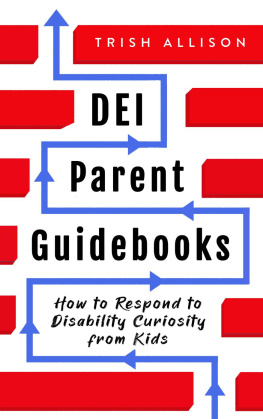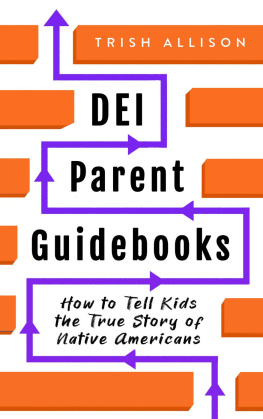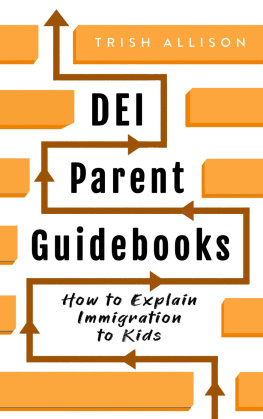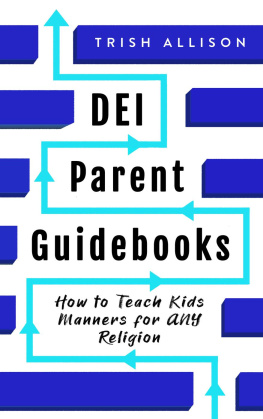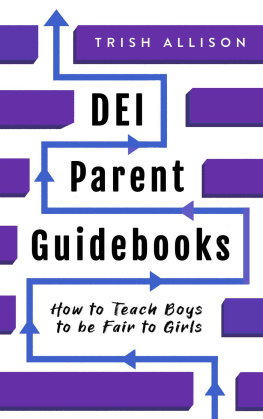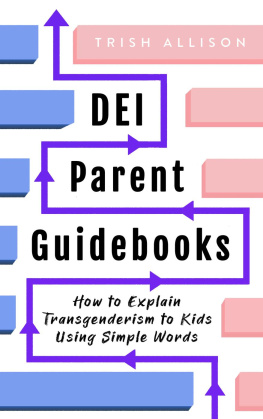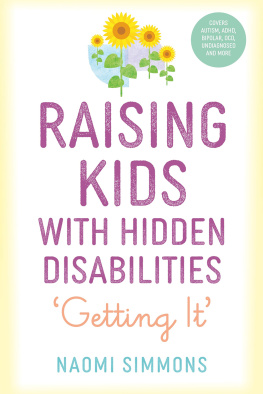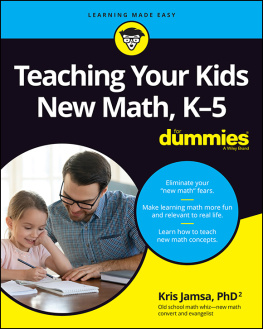How to Respond to Disability Curiosity from Kids
DEI for Parents
Trish Allison
Published by DEI for Parents, 2022.
While every precaution has been taken in the preparation of this book, the publisher assumes no responsibility for errors or omissions, or for damages resulting from the use of the information contained herein.
HOW TO RESPOND TO DISABILITY CURIOSITY FROM KIDS
First edition. August 6, 2022.
Copyright 2022 Trish Allison.
ISBN: 978-1393437680
Written by Trish Allison.
10 9 8 7 6 5 4 3 2 1
Also by Trish Allison
DEI for Parents
How to Support the Siblings of ASD Children
How to Respond to Disability Curiosity from Kids
How to Explain Immigration to Kids
How to Explain Transgenderism to Kids Using Simple Words
How to Talk to Kids About Poverty and Homelessness
How to Teach Boys to be Fair to Girls
How to Teach Girls They're Just as Worthy as Boys
How to Teach Kids Manners for ANY Religion
How to Teach Kids to be Kind to Gay People
How to Tell Kids the True Story of Native Americans
Watch for more at Trish Allisons site.
"The only true disability is the inability to accept and respect differences."
- Tanya Masse
W hether it's a family member or a new friend, at some point your child will need to be taught values for engaging properly with someone who has a disability. As a parent, you have a golden opportunity to teach your child the words and actions needed to treat that family member or friend with kindness and respect.
The purpose of this guidebook is to provide step-by-step suggestions for helping you guide your child in the right direction. Youll find tips for explaining disability basics, responding appropriately to common questions, and cultivating a disability-inclusive environment at home.
"Disability awareness starts from home. A place where the positive attitudes, values and customs are reinforced on a regular basis. Teaching your children about disability will help in breaking social barriers and allow a better, wholesome approach to inclusion of people with disabilities."1
Most important, your child needs to understand that disability equality, like racial equality and gender equality, is about treating everyone with kindness and respect.
Here are a few things to keep in mind as you're reading:
- None of the steps are intended to be completed on a single, dictatorial occasion. The intent is to communicate the values described here on a casual basis over a period of time.
- Tips assume that neither you nor your child have a mental or physical disability. There are many wonderful resources for helping disabled parents and children adjust to their own disability. However, this guidebook's content focuses on helping parents guide children toward understanding disability-equality values as they relate to other people.
- Mental and physical disability is intentionally discussed in separate chapters to help you quickly locate pertinent suggestions for discussing a friend or family member. Other than that, physical and mental disability should really be viewed using the same lens because they can be equally devastating and deserve the same amount of respect.
- Tips are written for parents of elementary-school children but theres a wide spectrum of maturity at every age. Some 6-year-olds are mature way beyond their years and some 10-year-olds are learning at a different pace than their peers. That said, you know your child best and what is and isnt appropriate for them.
- The chapters are organized linearly; that is, it's best to read chapter 1 first and chapter 5 last. However, if you have an immediate concern, feel free to read whichever chapter is most pertinent at the time.
- Many of the tips assume that you and your child already share a fairly solid foundation of communication. The tips are doable without this foundation, but they'll be much harder to implement successfully without it.
- The most efficient method for teaching children (and adults too) is to guide, not lecture. Help your child reach their own conclusions by providing 'breadcrumbs' that lead them to discover concepts using their own reasoning skills. Kids learn much more efficiently when they feel like they've arrived at a concept on their own instead of believing something because that's what they've been told to believe.
- It's so important to praise kids when they do something that's aligned with whatever you taught them. Be specific with your praise and look them in the eyes when you say it. Your approval means more to them than you think.
- While theres no one-size-fits-all solution for raising equality-minded kids, this guidebook provides suggestions for scenarios that you can tailor to fit your own situation. The ultimate goal is to help you raise compassionate, non-biased, successful humans.
Finally, this guidebook provides practical parenting tips for helping your child understand that its crucial to treat all people with disabilities as people first.
Chapter 1: Discover What Your Child Already Knows About Disability Equality
T his chapter appears first because it's important for you to find out what your child already knows about disability equality before you start guiding them.
Maybe s/he already well-versed in all aspects of current and past issues. Or maybe they know hardly anything about it and youre starting with a blank slate.
Either way, youll never know until you get them talking and really listen to their opinion.
Because kids tend to shy away from face-to-face, formal discussions, the best way to learn their opinion is to listen and learn sporadically. There's no need for a formal, one-time, sit-down, eye-to-eye conversation. Keep it simple and casual.
Step 1. Help your child share their thoughts
The best way to get most children to open up is to say the minimum. If you use short phrases that reassure and prompt, you're more likely to get a response. The goal here is to get your child feeling comfortable enough to express how they feel.
The other crucial element is timing. Trying to start a conversation when your child is playing a game, reading, or watching TV almost never works. They'll probably find it intrusive before you even start talking. Plus, you won't have their full attention.
If it's not the right time, wait.
Also, keep it casual. Kids are much more likely to respond honestly when they feel comfortable. As you go about your lives together, gather clues here and there.

